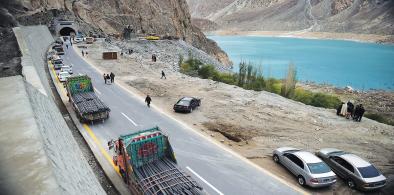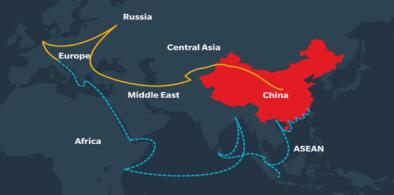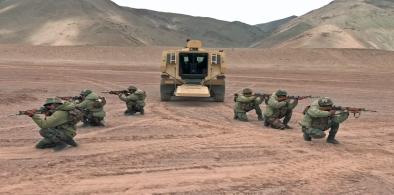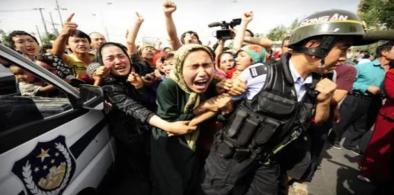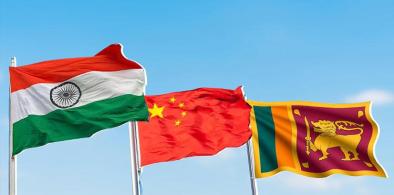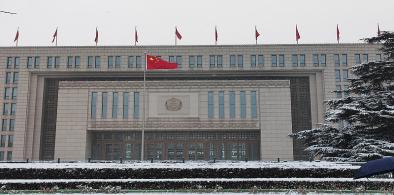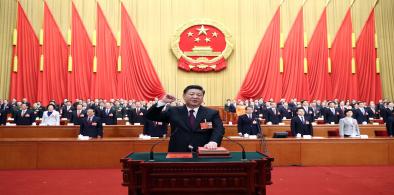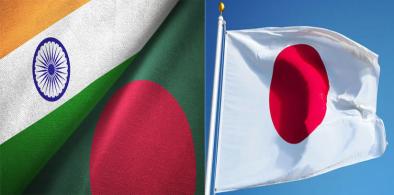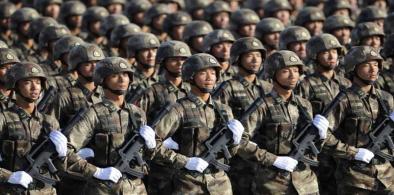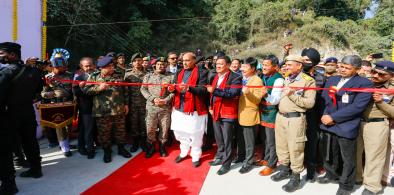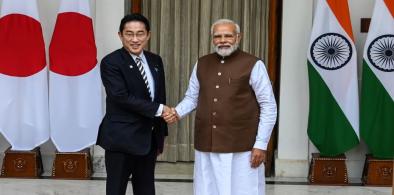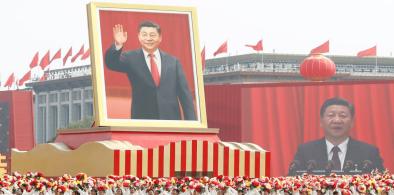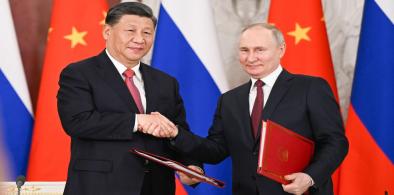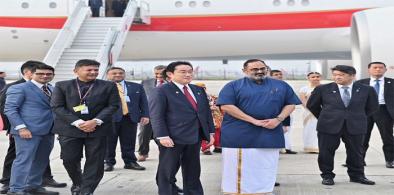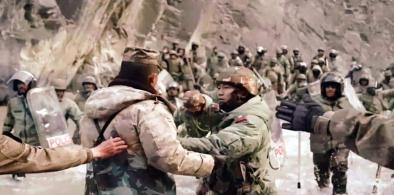Following the attack on a mosque in Kunduz, Afghanistan on October 8, 2021, ISK confirmed the recruitment and mobilization of Uyghur fighters. This was the first time that the alliance between IS-K and Uyghurs was affirmed by IS-K on media platforms.
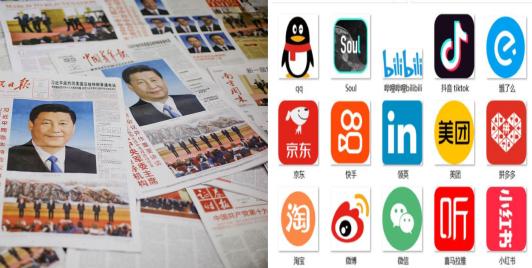
China's Reactions To Terror Incidents: State And Social Media Echo Clear Bias For Pakistan
The two incidents in India and Pakistan over the course of a week have shown that the coverage of terrorism by the Chinese media ecosystem largely reinforces the state’s foreign policy narratives and preferences for alignment in South Asia. Pakistan emerges as a clear preference for the public, which is reinforced by commentators and opinion makers on non-state news media platforms.
China’s CPEC Extension To Afghanistan Has Security Implications For Region
CPEC 2.0 is expected to serve as a major leverage tool for China to access Afghanistan’s untapped natural resources and enhance connectivity to Pakistan and Central Asia. However, for Afghanistan, the initiative may be more of a challenge than an opportunity. Countries such as Sri Lanka and the Maldives have already faced severe economic consequences from poorly structured Chinese-funded projects.
China's New Great Game: How Beijing is Redrawing South Asian Geopolitics
China's rise has, in the consensus view of most international relations scholars, fundamentally changed South Asia. The old, India-centric region is gone. Pakistan has tied its future to Beijing, seeing China as its ultimate guarantor. Bangladesh has played a smart game, using Chinese money for national development while maintaining its "friendship-to-all" foreign policy. The Teesta project shows Dhaka's new confidence in following its own national interest. For India, the challenge is immense, as it must now compete for influence in its own backyard.
From Sir Creek to the Arabian Sea: India's Trishul Military Exercise Is A Double-Edged Sign
India's increased naval exercises, combined with its Indo-Pacific ambitions and Western partnerships, indicate a shift from coastal defense to regional management. For smaller coastal states, such patterns can readily translate into worry, not from an impending threat, but from an inferred sense of power. When a major power operates near contested or shared spaces, the neighbors are obligated to interpret purpose through action.
India making rapid strides in military modernisation - but still far to go
But New Delhi must not be complacent, because a lot more needs to be done in acquisitions and modernisation to match the much larger and more sophisticated Chinese arsenal and to raise India’s politico-diplomatic assertiveness against Beijing's muscle-flexing.
China’s role in Sri Lanka and implications for India
To gain a strong foothold in Sri Lanka, China used the political weakness of the Rajapaksa family to sustain its corrupt and authoritarian regime by funding its electoral campaign in order to gain a strategic advantage in the Indian Ocean Region to marginalize India and other Western countries. especially US influence in the Indo-Pacific region.
Lengthening arm of Chinese 'police state'! US cracks down on Chinese overseas 'police stations'
Safeguards Defenders, a Spain-based human rights NGO that first drew attention to the Chinese overseas “police stations” last year, listed operations in 30 countries in North and South Americas, Europe, Africa and Asia (but not in India or other South Asian countries).
Is China’s global influence on the wane?
China has blocked several times attempts to designate Pakistan-based operatives behind attacks on India as global terrorists, which would place them under international sanctions.
Why Japan is edging closer to Bangladesh and India in the region
Viewing Bangladesh and other areas to the south as a single economic zone, Japan will build Bengal-Northeast India industrial value chain concept in cooperation with India and Bangladesh to foster the growth of the entire region.
China's military modernization and warfare strategy: Will 2024 be a watershed year for the Indo-Pacific and global geopolitics?
Keeping the warfare history and strategic culture of China in the Indo-Pacific region in perspective, chances are high that there could be more short-term military clashes in the near future with India which will be more intense by nature, especially before India’s general elections in 2024, in order to influence India's political landscape and change the politico-and security architecture of the Indo-Pacific region.
India's strategic border development in the north and northeast was long overdue
Whatever has been achieved by BRO in 2022 and early 2023 is very substantial and has raised Beijing's ire much more. For India, it is imperative to continue the momentum of its long overdue building of strategic infrastructure, because a lot more needs to be done to match PLA’s buildup and deployment.
Japanese PM's visit to New Delhi: Advancing the goals of a free and open Indo-Pacific in South Asia
India and Japan are already cooperating on the Bay of Bengal infrastructure development through their strong regional cooperation. Among these initiatives are the construction of LNG infrastructure in Sri Lanka, the building of pipelines and electrification in Myanmar, and the improvement of Bangladesh's road network.
AUKUS nuclear submarine pact: Implications for Indo-Pacific
This agreement has profound geo-strategic implications against the backdrop of the US-China maritime battle in the Indo-Pacific region. It will not only add fuel to the fire of their strategic competition but also result in the growing militarization of the strategic region amid the Taiwan crisis.
China's growing peacemaker role and value-free approach give it global heft
Unlike the US and Western countries, or even Myanmar's fellow members of the ASEAN, Beijing has refused to condemn the military junta enabling it to play a role in diplomacy with Bangladesh on the Rohingya and with the internal insurgencies.
Is China engineering a new world order?
As Beijing midwives a multipolar world as an alternative to the world order dominated by the US, there are many issues that stand in the way. They include simmering border disputes with India and its aggressive behaviour along the Line of Actual Control, its claims on the Japanese islands of Senkaku, and the dispute over the Spratly Islands that involve the Philippines, Taiwan, Malaysia, Vietnam, and Brunei. Above all is its menacing posture towards Taiwan.
AUKUS is strong regional insurance against Indo-Pacific domination by China
AUKUS remains a symbol of a clear message to Beijing, and regional players, as a powerful deterrence to step up militarily if necessary; and remains a crucially needed counterbalancing measure that will bring assurances and guarantee that the West’s pivot and readiness to maintain its Indo-Pacific presence are here to stay.
Is Japan's move towards militarisation beneficial for the region?
Instead of relying solely on the West and strengthening military preparations against Beijing, Japan should play its own diplomatic role as China's neighbor in de-escalating regional tensions, creating a different atmosphere in the Indo-Pacific region.
Firefight-phobic PLA purchases advanced maces. How much longer will India manage disputed borders ‘bulletlessly’?
The CPC-PLA combo’s very smart use of bullet-less border management agreements, incursions/transgressions, and building villages along the LAC is continuing because the Indian Army is following bullet-less methods initiated by the Chinese even after losing 20 soldiers including a colonel by PLA’s brutal and barbaric attack in June 2020.



